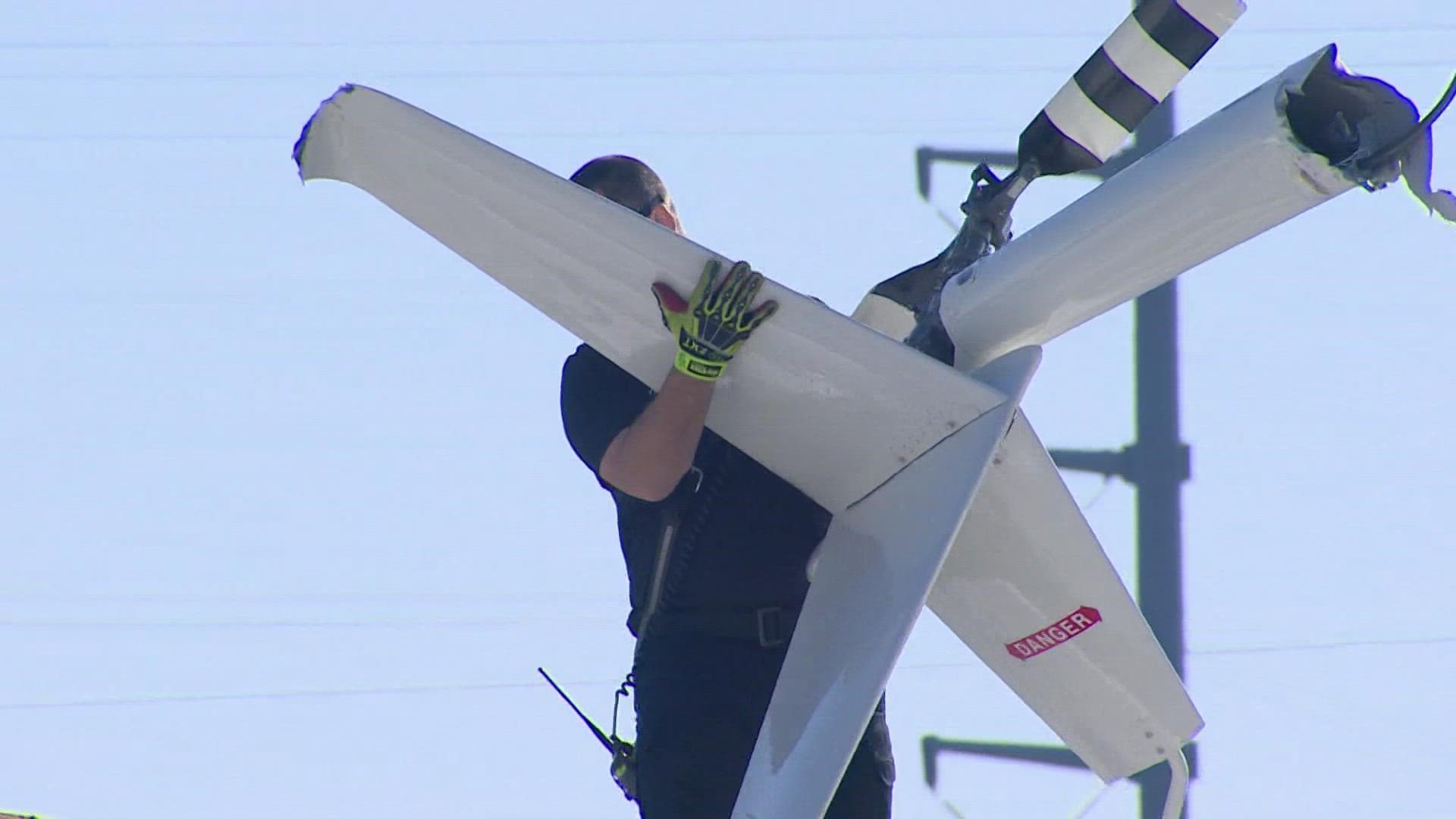ROWLETT, Texas — The National Transportation Safety Board (NTSB) has released a preliminary report on the March 25 helicopter crash in Rowlett that killed two people.
The crash happened just before 11:30 a.m. in an open lot near some businesses in the 2200 block of Lakeview Parkway. The Robinson R44 helicopter also caught fire on the ground.
Two people died in the crash. They were later identified by the Dallas County Medical Examiner's office as flight instructor Lora Trout, 31, and student pilot Ty Wallis, 42.
The NTSB took lead of the investigation and revealed some early details in a report on April 14.
According to the NTSB, the training flight was the second of the day for the two, and the lesson included "pre-solo maneuvers, introduction/simulation of emergency procedures, equipment malfunctions, and vortex ring state recognition and recovery."
The NTSB said Wallis had a pilot certification for airplanes and was working to add one for helicopters.
As for the cause of the crash, the NTSB revealed that it appears the main rotor blade made contact with the tail boom during the flight. The NTSB said the helicopter was maneuvering about 2,000 feet and that its airspeed "slowed significantly" before its descent.
Video from witnesses showed the helicopter and its separated tail section falling from the sky. The tail was ultimately found on top of a nearby business building about 300 feet from the wreckage, according to the NTSB.
The NTSB reported that there were no radio or distress calls from the helicopter. There were also no signs of mechanical issues or pre-separation before the flight, according to the NTSB.
The Robinson R44 models have continued to be under scrutiny, according to law experts.
Dallas-based attorneys Jon Kettles and Mike Lyons told WFAA they have represented several families regarding R44 crashes.
Kettles, who was a military helicopter pilot for eight years, commented about how that model's main rotor teeters back and forth and can flex far enough to make contact with the tail.
"There's a special FAA regulation for training to fly this model aircraft based on a long history of the stability of the aircraft in certain flight modes," Kettles said. "I don't think it's ever a good sign when there's a regulation specifically requiring more training in this model helicopter."
In the preliminary report, the NTSB did not say if investigators believe the crash was caused by pilot error or product failure.
"[NTSB] will figure out precisely what happened, and I hope that they take swift action if it is, in fact, something related to the design or some type of product failure," Lyons told WFAA after the crash.

